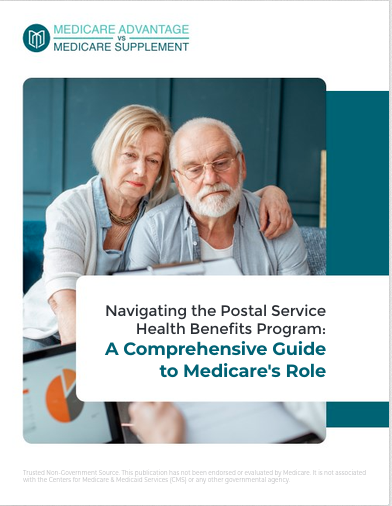Key Takeaways
-
You typically become eligible for Medicare when you turn 65, but age isn’t the only factor—certain disabilities and medical conditions may qualify you earlier.
-
Timing is everything. Knowing when and how to sign up can help you avoid late penalties and gaps in your healthcare coverage.
Feeling Confused About Medicare Eligibility? You’re Not Alone
If you’re scratching your head wondering whether it’s time to hop on the Medicare train, don’t worry—you’re not the only one. Medicare eligibility can seem like a moving target, especially with all the different parts, enrollment windows, and exceptions. But here’s the deal: once you understand the basics, everything starts to click into place.
Let’s go through it step by step so you can figure out where you stand and what you need to do next.
The Magic Number: Age 65
For most people, Medicare starts at age 65. That’s the big milestone. If you’re turning 65 in 2025, you’ll want to pay close attention to your timing. You have a 7-month window called your Initial Enrollment Period (IEP):
-
It starts 3 months before your 65th birthday month
-
Includes your birthday month
-
Ends 3 months after your birthday month
If your birthday is in July 2025, for example, your IEP runs from April to October 2025. The sooner you enroll within this window, the smoother your coverage transition will be.
You Might Qualify Before Age 65
Yes, really! Medicare isn’t just for retirees. You could be eligible earlier than 65 if you fall into one of these categories:
-
You’ve been receiving Social Security Disability Insurance (SSDI) for at least 24 months
-
You have End-Stage Renal Disease (ESRD) requiring dialysis or a kidney transplant
-
You’re diagnosed with Amyotrophic Lateral Sclerosis (ALS), which makes you eligible as soon as your SSDI starts
These special cases bypass the age requirement and kick in based on your medical status.
Citizenship and Residency Requirements
Medicare isn’t just about age and health—it’s also about legal status. Here’s what you need to meet:
-
Be a U.S. citizen or lawfully present in the U.S.
-
You must have lived in the U.S. for at least five continuous years if you’re not a citizen
If you’re new to the country or just became a lawful permanent resident, make sure you meet the 5-year requirement before expecting full Medicare benefits.
How Work History Factors In
Ever heard of quarters of coverage? It’s a fancy term for how much you’ve worked and paid into Medicare via payroll taxes. To get premium-free Part A, you or your spouse need:
-
40 quarters (about 10 years) of Medicare-covered employment
If you don’t meet that mark, you can still get Medicare—but you may have to pay a monthly premium for Part A.
And here’s a pro tip: if your spouse qualifies for premium-free Part A and you’ve been married for at least one year, you may qualify through their work record.
Already Getting Social Security? Here’s What Happens
If you’re already getting Social Security benefits before you hit 65, you’re in luck—your Medicare enrollment is usually automatic.
-
You’ll get your Medicare card in the mail around 3 months before your 65th birthday
-
You’ll be automatically enrolled in Part A and Part B
Just make sure to double-check your coverage start dates and decide whether you want to keep Part B, especially if you’re still working and covered under a group health plan.
Still Working at 65? Here’s What to Know
Not ready to retire yet? Totally fine—but Medicare may still play a role. If you’re still working and have health coverage through your employer (or your spouse’s), the size of the company matters:
-
If the employer has 20 or more employees, you can delay enrolling in Part B without penalty
-
If the employer has fewer than 20 employees, Medicare becomes your primary coverage, and you should consider enrolling
Delaying Part B when you have qualifying coverage means you can avoid the late enrollment penalty later.
What If You Missed the Enrollment Window?
Life happens. If you miss your Initial Enrollment Period, all is not lost. There are other times you can sign up:
General Enrollment Period (GEP)
-
Runs from January 1 to March 31 each year
-
Coverage begins July 1
Special Enrollment Period (SEP)
-
Available if you’re losing employer coverage
-
You have 8 months to enroll in Part B after your group plan ends
The key is to avoid penalties by making sure you have creditable coverage—basically, insurance that’s at least as good as Medicare.
Late Enrollment Penalties Are Real
Yes, unfortunately, Medicare isn’t very forgiving if you procrastinate. Here’s how it plays out:
-
Part B late penalty: You’ll pay an extra 10% for each full 12-month period you could’ve had Part B but didn’t
-
Part D late penalty: You’ll pay an extra 1% of the national base premium for every month you went without creditable prescription drug coverage
These penalties are not one-time fees—they stick with you for as long as you have Medicare. So yeah, timing is pretty important here.
How to Actually Sign Up
If you’re not automatically enrolled, you can sign up in one of these ways:
-
Online through the Social Security Administration’s website
-
By phone with Social Security
-
In person at a local Social Security office
Just make sure to have your information handy, including any details about your current health insurance if you’re still working.
What Medicare Covers Once You’re In
You’ve checked the boxes and you’re eligible—so what exactly are you getting? Medicare comes in different parts:
-
Part A (Hospital Insurance): Covers inpatient care, skilled nursing facility stays, hospice care, and some home health services
-
Part B (Medical Insurance): Covers doctor visits, outpatient services, lab tests, preventive services, and durable medical equipment
-
Part D (Prescription Drug Coverage): Covers medications through separate drug plans
-
Part C (Medicare Advantage): Offers an alternative way to get Parts A and B through private insurance plans, often with extra perks
Parts A and B are the original Medicare. Most people also consider adding Part D or choosing a Part C plan to round things out.
What If You’re Not Eligible Yet?
If you’re younger than 65 and don’t meet any of the early eligibility criteria, you’ll have to wait. But don’t just ignore Medicare until then. Use this time to:
-
Track your work history to make sure you’re on your way to 40 quarters
-
Understand your future coverage options
-
Look into other insurance programs if you need coverage before Medicare kicks in
Staying proactive now can save you stress (and money) down the line.
Wrapping It Up: Check Your Status and Plan Ahead
Getting Medicare is a big milestone, but it doesn’t have to be a confusing one. Knowing your eligibility status, understanding your timeline, and taking the right steps can help you avoid penalties and secure the coverage you need.
If you’re still unsure about where you stand, it’s smart to talk to a licensed agent listed on this website who can walk you through your specific situation.










